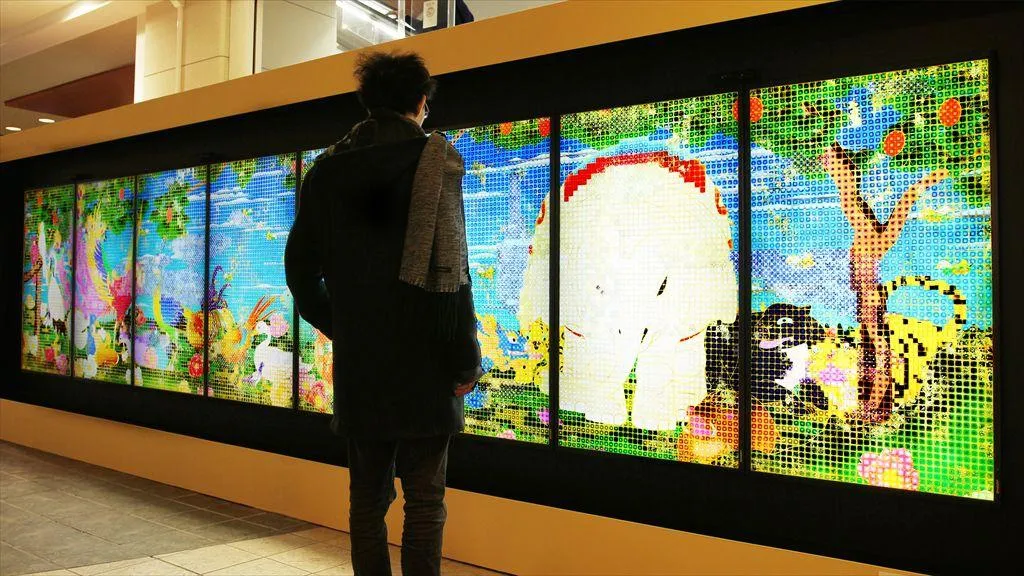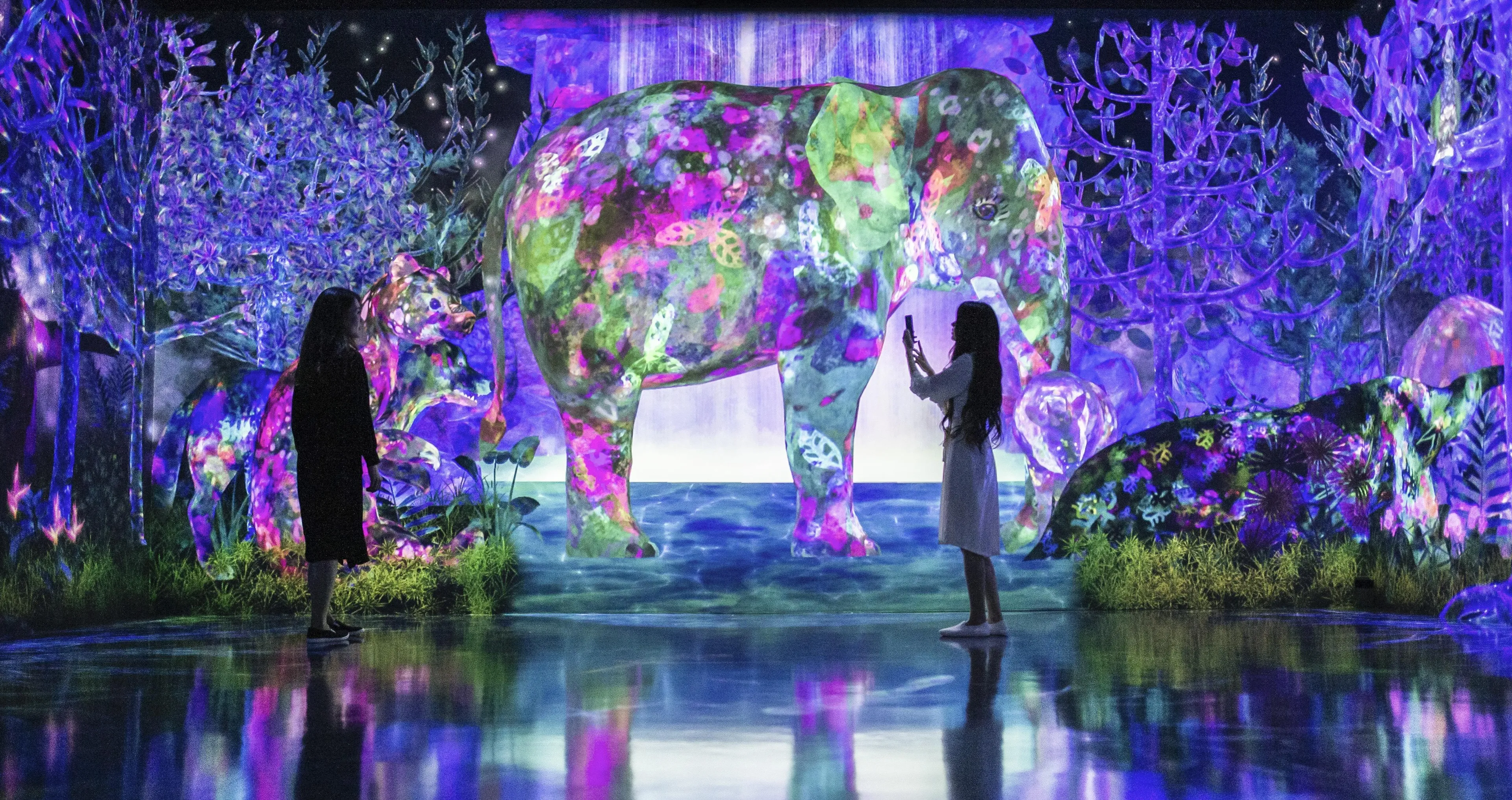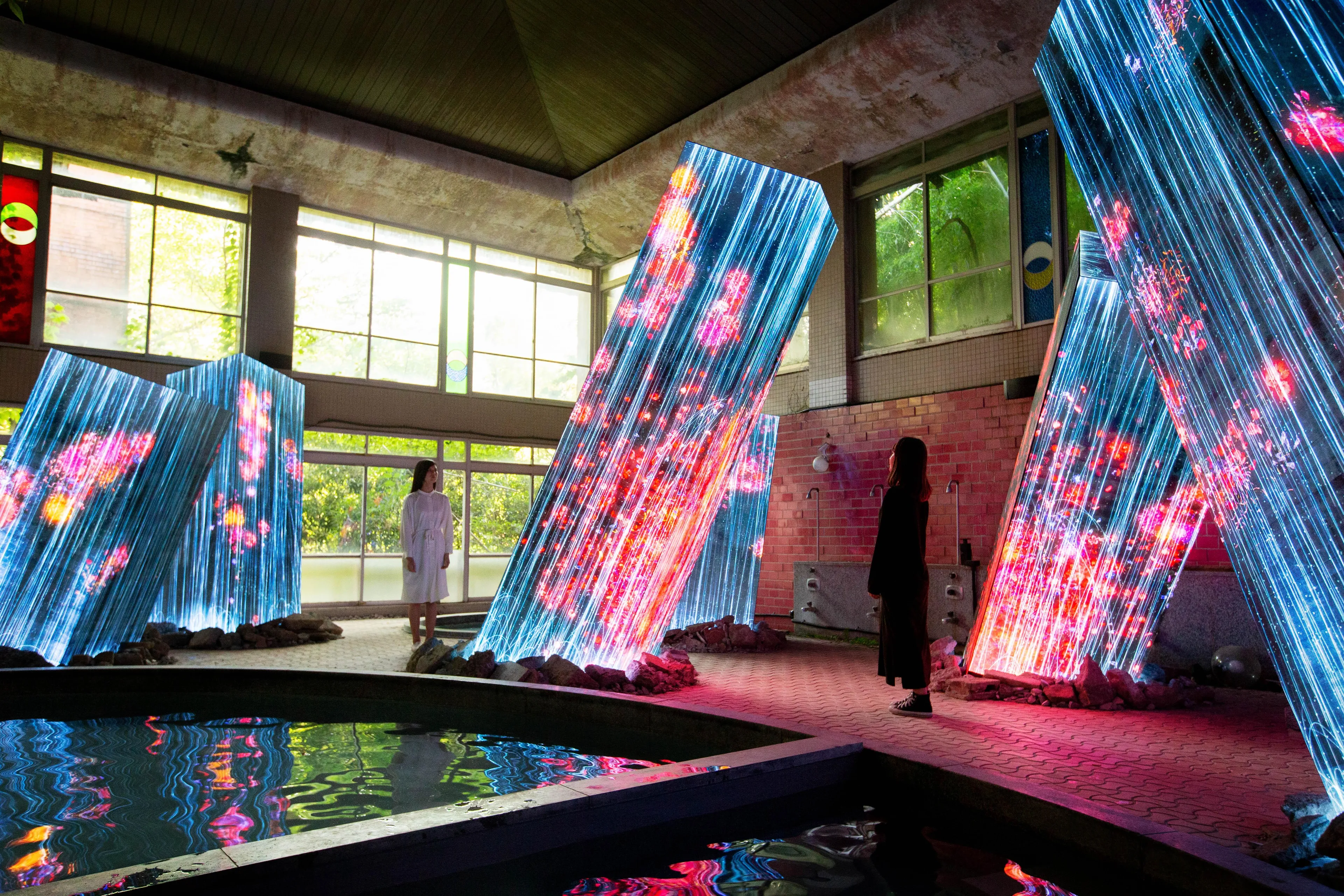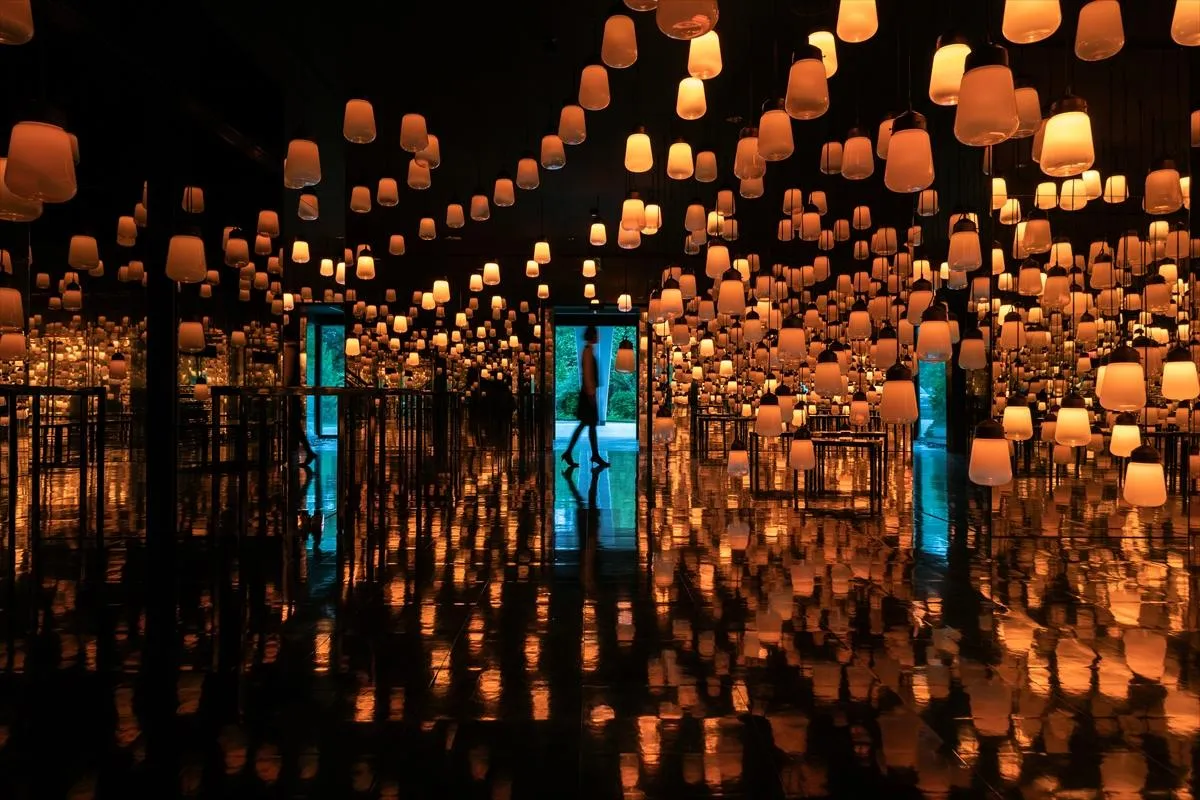United, Fragmented, Repeated and Impermanent World | teamLab

United, Fragmented, Repeated and Impermanent World
EXPOSITION PASSÉE
2013.11.16(Sat) - 2022.3.04(Fri)Canal City Hakata, Fukuoka
Public Art

United, Fragmented, Repeated and Impermanent World
EXPOSITION PASSÉE
2013.11.16(Sat) - 2022.3.04(Fri)Canal City Hakata, Fukuoka
Public Art
Sur teamLab
teamLab (f. 2001) is an international art collective. Their collaborative practice seeks to navigate the confluence of art, science, technology, and the natural world. Through art, the interdisciplinary group of specialists, including artists, programmers, engineers, CG animators, mathematicians, and architects, aims to explore the relationship between the self and the world, and new forms of perception.
In order to understand the world around them, people separate it into independent entities with perceived boundaries between them. teamLab seeks to transcend these boundaries in our perceptions of the world, of the relationship between the self and the world, and of the continuity of time. Everything exists in a long, fragile yet miraculous, borderless continuity.
teamLab’s works are in the permanent collection of the National Gallery of Victoria, Melbourne; Art Gallery of New South Wales, Sydney; Art Gallery of South Australia, Adelaide; National Gallery of Australia, Canberra; Amos Rex, Helsinki; Museum of Contemporary Art, Los Angeles; Asian Art Museum, San Francisco; Borusan Contemporary Art Collection, Istanbul; and Asia Society Museum, New York, among others.
teamlab.art
Biographical Documents
teamLab is represented by Pace Gallery, Martin Browne Contemporary and Ikkan Art.
Informations sur le Lieu
United, Fragmented, Repeated and Impermanent World
Durée
2013.11.16(Sat) - 2022.3.04(Fri)
Website
Accès
Accès
1F Canal City Hakata South Bldg., 1-2-74 Sumiyoshi, Hakata-ku, Fukuoka-shi, Fukuoka
Adresse dans la langue locale:
キャナルシティ博多 サウスビル1F
\r\n福岡県福岡市博多区住吉1丁目2
\r\n福岡県福岡市博多区住吉1丁目2
Expositions À Proximité

Spatial Calligraphy, Reversible Rotation and Crane - Fukuoka Gold Light, Day & Night
2017.3.30(Thu) - Permanente
Fukuoka Airport Domestic Terminal JAL DP · Sakura Lounge, Fukuoka
Public Art

teamLab Forest Fukuoka - SBI SECURITIES Co., Ltd.
2020.7.21(Tue) - Permanente
Next to the MIZUHO PayPay Dome FUKUOKA, Fukuoka, Kyushu
teamLab Museum

teamLab Ruins and Heritage: Rinkan Spa & Tea Ceremony
2020.11.10(Tue) - Permanente
Mifuneyama, Takeo Hot Springs, Kyushu
Permanent Solo Exhibition

Mifuneyama Rakuen Hotel
2018.7.19(Thu) -
Mifuneyama Rakuen Hotel, Takeo Hot Springs, Kyushu
Hotel



